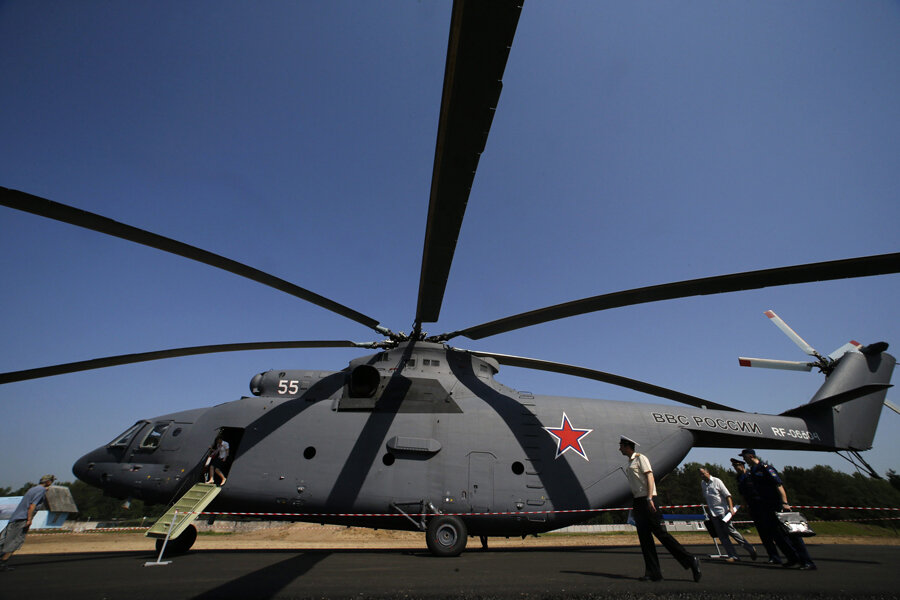Russia's arms sales boom with Soviet designs
Loading...
| Moscow
Russian arms exports to the world are booming, but a big expansion of sales is needed to help rebuild the Russian military-industrial complex and help fund the country's ambitious rearmament program, President Vladimir Putin said on Monday.
Exports of Russian weaponry were at a healthy $5.6 billion in the first half of this year, while the total orders on the books of state arms exporters have fattened from $35 billion at the beginning of this year to over $50 billion now, Mr. Putin told the government commission dealing with arms exports.
One problem with Russia's burgeoning arms contracts is that there is no public transparency whatsoever, experts say.
"We have no idea about any details of the deals our government does in this field," says Alexander Golts, military expert with the online journal Yezhednevny Zhurnal. "Are they profitable? Are they just meant to keep certain industries alive? There's no way of knowing."
According the the Stockholm International Peace Research Institute [SIPRI] Russia was the world's second-biggest arms merchant in 2012, with about 26 percent of the global market compared to the US with 30 percent. According to some reports, a surge in Russian arms sales over the past two years might already have put it in first place.
"It is important to strengthen Russia's presence on global arms markets," Putin told the officials. "Beyond doubt, this should help national defense industries to plan for an expansion and update of production, and create new quality jobs."
Russian rearmament is now in full swing, with state cash now paying the lion's share of the immense costs involved in resurrecting the former Soviet military-industrial base. But during the long funding famine following the collapse of the USSR, exports were crucial to keeping the industry's main centers alive, says Viktor Litovkin, military news editor for the official ITAR-Tass agency.
"Now the first priority is domestic production, for our armed forces," he says. But export income still plays a role in stimulating industrial growth and conferring economies of scale on many production lines.
Russia's main customers are India – currently the world's biggest arms importer – China, Venezuela, and Algeria.
Unlike the US, which mostly sells expensive, ultra-modern equipment to its friends and allies, Russia tends to widely peddle time-tested Soviet designs at relatively low prices.
Russia recently sold five Su-25 ground attack fighters to Iraq after the Baghdad government complained about delays and red tape in delivery of a consignment of US F-16 fighters it ordered three years ago.
"There is a big demand for Russian arms. Most countries aren't going to buy super-modern, expensive weapons, which are often too complicated for them," says Mr. Golts.
"They need weapons that are appropriate to the adversaries that they confront. So Iraq [which faces a jihadist revolt that has no advanced air defenses] can make quick and effective use of those Su-25's. Russian weapons are modern enough, they work well, and they're cheap compared to American ones," he adds.
Some experts suggest that the newest generations of Russian weaponry, some of which are already available for export, might even be a match for their more sophisticated US-built counterparts.
They include the S-300 and S-400 air defense systems, the Iskander tactical missile, the T-90 battle tank, and a range of new combat aircraft including a "fifth generation" fighter plane that Moscow claims can rival the US F-22 Raptor.








